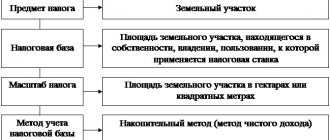Hello! In this article we will talk about how to conduct the first meeting with a client so that it develops into long-term cooperation.
Today you will learn:
- What are the stages of meeting with a client?
- How to prepare for upcoming negotiations;
- A few business etiquette techniques that will help you quickly establish contact with a potential client.
The importance of the first meeting and its purpose
For a person who must find and meet new clients as part of his job duties, the first meeting is of great importance. The signing of the contract and, most often, the amount of wages depend on how successfully the negotiations go. Therefore, such an event must be approached very responsibly.
When going to negotiations with a client, you must understand that the first meeting does not always end with the signing of a contract for close cooperation. This is only the first step towards a successful business relationship.
When meeting with a potential client for the first time, you first of all need to pursue the following goals:
- Determine whether the client is promising and ready to cooperate;
- Form the primary needs of the interlocutor;
- Decide on the range of goods and services that are of interest to the client;
- Offer to use free product samples (samples);
- Ask your interlocutor to express his opinion about the product you are offering.
The main purpose of the meeting is not to sell the product, but to sell yourself. You must do everything in your power to achieve goodwill and interest from the client.
Come to the meeting prepared
A common mistake is to come to a meeting, get acquainted and just talk. You know where you are going, what is expected of you, and, of course, you know your services and costs. Therefore, during a meeting, even the first one, you must give the client more or less specific answers on price, terms and other conditions. Of course, this should not be the final price. But the client should still get a general idea. Now, thanks to the Internet, you can find a lot of information about almost any company. Therefore, do not be lazy, try to find out in advance what kind of company it is, its position in the market, customer reviews, main services, promotional materials, etc. All this will be your trump card at the meeting.
Preparing for a meeting with a client
In order for the first negotiations to be successful, you need to carefully prepare for them. You'll have to think through all the details. You should not rely on yourself to find your way around. You need to be prepared for anything. To do this, you will have to develop several plans for the development of events.
All preparation can be divided into 2 stages - informational and organizational.
Information stage
Before planning a meeting, you should collect as much information as possible about your potential client.
First, collect information about the field of activity of your future interlocutor. Read more specialized literature, try to remember as many specific terms as possible that may be useful during the conversation.
Secondly, go to the website of the organization that the client represents and familiarize yourself with its content. Study the management team and analyze all available information.
Thirdly, take an interest in the activities of your competitors, as well as their possible offers. Thanks to this, you will be able to offer your interlocutor more favorable terms of cooperation.
Fourth, thoroughly study the product you are offering. You must know every detail about the products or services that you offer to the client. If you cannot adequately present your product at the upcoming negotiations, then it is unlikely that anyone will want to deal with such an inexperienced employee.
Organizational stage
At this stage, you should start organizing the upcoming meeting. First you need to assign it.
To do this, call your potential client and find out where, when and at what time it would be convenient for him to meet with you. Set specific dates. When arranging a meeting, take into account the wishes of the interlocutor.
Let's look at examples of meeting locations.
| Client territory | This is most often the client's office. It is possible to prepare for such a meeting, but most often you have to act according to circumstances |
| Your territory | This could be your personal office, or a meeting room. You should not make appointments in a room where there are many prying eyes and you may be distracted. Under no circumstances should you start negotiations in the corridors or on the way somewhere |
| Neutral territory | This could be a rented conference room or, in extreme cases, a quiet coffee shop. Never have a meeting in a restaurant. You and the client will have to be distracted by food and wait for someone to chew the food. Keep meals separate from business meetings. |
Any meeting place should be quiet and uncrowded.
After the client has accepted the offer of a meeting, it is necessary to thoroughly prepare for it. Think about what gadgets and demo materials you will need.
You must have with you:
- A diary or business notebook in which you will write down information that you think is important;
- Business cards – should be meaningful, but at the same time concise;
- Handle;
- Blank sheets of paper (if the meeting takes place in a coffee shop and the client does not have a diary at hand);
- Blank contracts, questionnaires or order forms (in case you organize the right meeting and the client immediately wants to conclude an agreement);
- Advertising brochures - the client needs to be presented with visual information, and not talk about the product “on fingers”.
Having prepared the necessary attributes for negotiations, you must prepare yourself. As the proverb says, “You are greeted by your clothes...”, so your appearance can play a key role.
When going to an appointment, you should:
- Find business clothes in your wardrobe. This could be a suit + shirt + tie. Or a suit and turtleneck. Women can wear a skirt and blouse or pantsuit. You should feel comfortable in these clothes.
- Refuse extravagant, ultra-modern and provocative outfits.
- Tidy your hands and hair. Women's makeup should not be bright and provocative.
- Pay attention to your shoes and clean them if necessary.
- Refuse cheap accessories and fakes of famous brands. Many wealthy people at first glance distinguish cheap Chinese counterfeits of watches, lighters and other accessories from the original. If you cannot afford expensive branded items, then it is better to abandon them altogether.
Step-by-step instructions or meeting script
You, as a person who wants to get a new client, need to understand that preparation alone is not enough for successful negotiations. You should be familiar with meeting protocol and basic business etiquette.
We have compiled an action algorithm for you, thanks to which the first meeting with a client will be at the highest level, and you, as a specialist, will be left with the best impressions.
- Enter the office. If you are meeting with a client in his office, and your arrival has been reported, enter the office by knocking. You do not need to ask permission to log in again.
- If the meeting takes place on neutral territory, then you need to arrive 5-10 minutes before the appointed time.
- Greet the client. Say hello using your first and last name.
- At the client's premises, the client should be the first to extend his hand to greet. If he did not do this, then the handshake does not occur.
- In your territory, you are obligated to extend your hand first.
- In a coffee shop, men extend their hands to women, older ones to younger ones.
- Exchange business cards. The business card must be handed over in person. If a client offers you his business card, you should definitely read it out loud. You can't put it in your pocket without looking and familiarizing yourself with it.
- Sit down on a chair. If the negotiations are taking place in the client’s office, then wait until you are asked to sit down. If you don’t receive an offer, ask where you can sit. If the meeting is taking place on neutral territory, then there is no need to wait for an invitation to take a chair.
- You start a conversation. It is necessary to start negotiations with abstract topics. It's best if you give a compliment to the client's company. Only he must be sincere. Do not touch on topics related to religion, politics, or sports interests. It is also better to refrain from banal topics about the weather and the beautiful interior of the office.
- After talking on general topics, move on to asking situational questions. Start asking them carefully, “testing the waters.”
- Then move on to more serious problematic issues and suggest ways to solve the identified problems. Make a short forecast for future cooperation.
- If the client expresses a desire, you can sign a cooperation agreement. But don't insist on it. Very often a person needs to “digest” the information received.
- It is better to end the meeting with an agreement on the date and time of the next meeting. Even if it turns out that the client is not interested, still ask him to meet with you again.
- Say goodbye to your interlocutor, thank you for their time, and leave the room.
- After the negotiations, write down the most important points and details of the meeting in your diary.
Creating conditions
To feel confident and calm during business communication, consider the following aspects:
1. Meeting place.
If it is decided to hold the meeting in the client’s office, then the strategy of behavior will have to be determined depending on the circumstances. If the choice of location is yours, then a separate office is perfect. It will give presentability and status. If the client insists on neutral territory, then a rented conference room will help out; in extreme situations, a quiet coffee shop. It is important that external factors do not distract from the matter.
2. Resources.
We will talk about office supplies, which a sales manager cannot do without. As mentioned above, these are additional papers and forms, an offer letter template, and more. In addition, a diary, a set of pens, a business card, a computer or tablet with Internet access will be useful. Be prepared for any situation.
3. Appearance.
The best option is to trust the classics. A business suit should be clean and neat, and fit well on you. Particular attention should be paid to shoes, hairstyle, condition of hands, accessories, makeup (if you are a woman). Remember, you are a business representative.
Tips for holding your first meeting
There are situations when a meeting is prepared and organized at the highest level, and everything goes great, but at some point something happens and the client withdraws into himself. After which the negotiations cannot be considered successful.
Most likely, some mistake was made that played a decisive role.
To eliminate the possibility of such a scenario developing, we suggest that you familiarize yourself with the following recommendations and always adhere to them:
- Turn off your cell phone. Calls will distract you in every possible way, and if you decide to pick up the phone in the middle of negotiations, then you will show disrespect for your interlocutor.
- Don't try to smoke.
- If a client offers you tea, coffee or water, then opt for water. After asking for coffee, you will receive several more questions (for example, how many spoons of sugar to put in or what kind of coffee you prefer). They will distract you and take up valuable time.
- Look your interlocutor straight in the eye. You must make eye contact.
- During negotiations, periodically make notes and notes.
- Don't fawn or fawn. Behave with dignity; this is the only way the client will treat you as an equal.
- Let the client know that you respect his interlocutor’s opinion and are ready to defend his interests.
“Yes, we worked with similar companies”
The favorite question of a client who wants to catch you is: “Do you have experience with similar projects?” At the same time, everyone hints at something different - uniqueness in their industry, the size of the company, the peculiarity of the field, etc. It might look like this: - Well, have you previously made websites for the production of children's green cubes measuring 3 by 3? - hints at its uniqueness and complexity of production. Your answer - yes, we made a website for a toy store, which also included cubes; — Have you worked with large retail portals before? - in this case, the client hints that they are very large and he doubts your professionalism. Your answer is yes, just last month we worked with the AAA portal, the average daily traffic of which exceeded 150,000 per day. Your goal in this case is to show the client that you understand the topic and try to translate it into a plane that is familiar to you. Or by the proximity of topics, or by the size of the company, or by some other criterion. In general, be sure to have some samples or portfolio with you.










